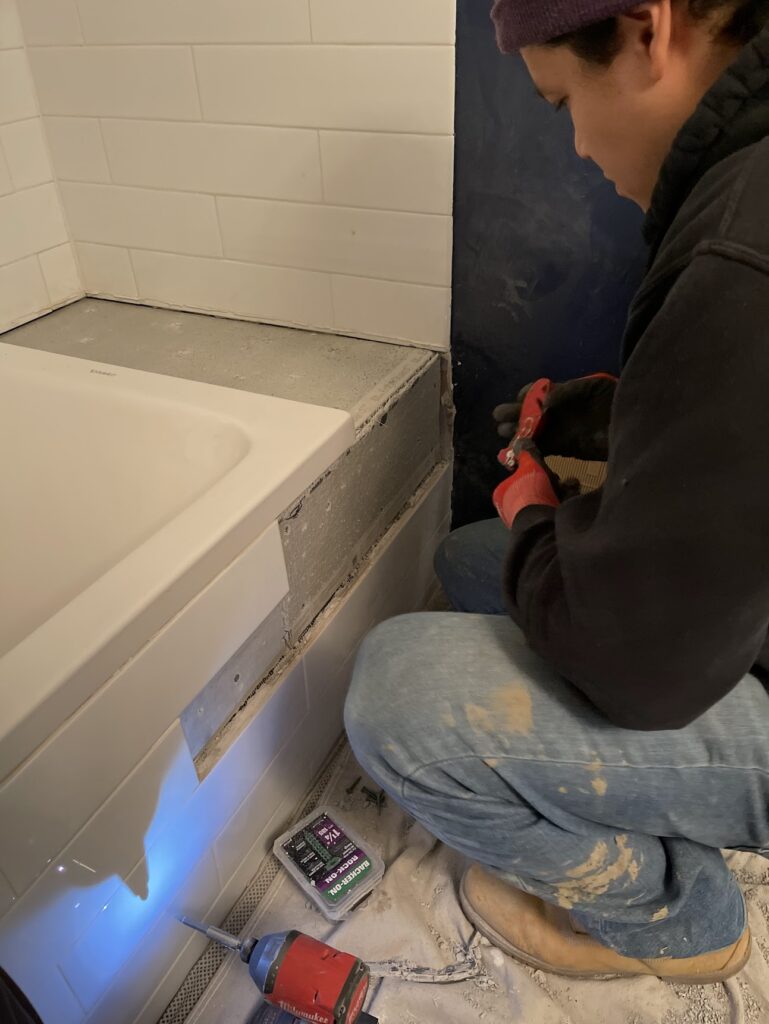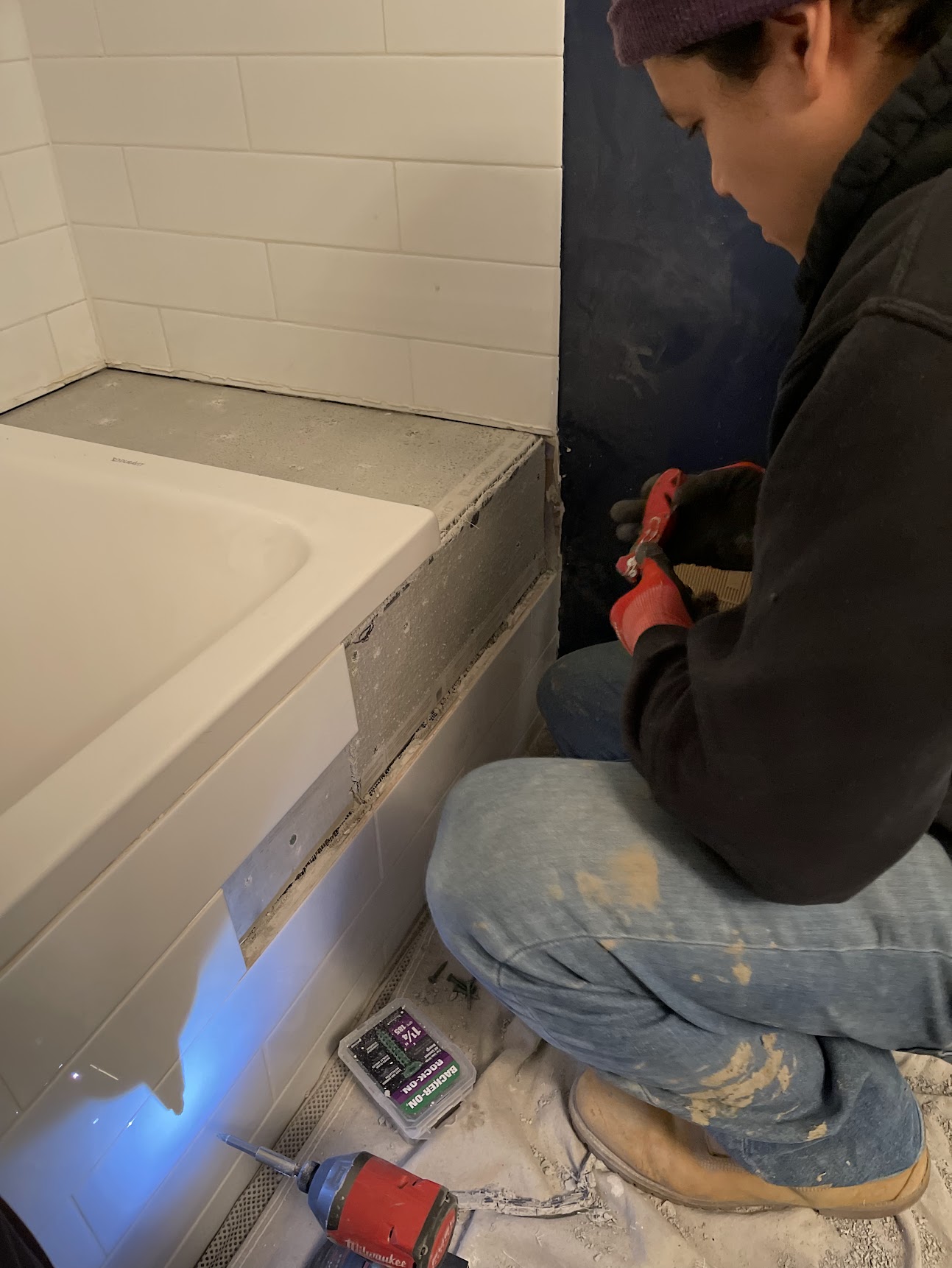Cracked or missing grout can make even the nicest tile floors and walls look shabby. But don’t worry – fixing grout issues is a doable DIY project for many homeowners. With some basic tools and materials, you can repair damaged grout and make your tiled surfaces look fresh again.

Grout fills the spaces between tiles and helps hold them in place. Over time, grout can crack, chip, or fall out completely. This not only looks bad, but can let moisture seep behind the tiles. Luckily, repairing tile grout is often as simple as cleaning out the damaged areas and applying new grout.
For small repairs, you may only need to remove the top layer of bad grout. Larger jobs might require taking out all the old grout between tiles. Either way, the process involves scraping out the damaged grout, cleaning the area, and carefully applying fresh grout to restore those crisp grout lines. With a little effort, you can make your tiled surfaces look good as new.
Identifying and Assessing Grout Damage
Grout damage can sneak up on you if you’re not paying attention. It’s important to catch problems early and know which types of grout are prone to certain issues.
Spotting Early Signs of Grout Wear
Keep an eye out for cracked grout or crumbling grout. These are big red flags that shouldn’t be ignored. Cracks can start small but get bigger over time.
Look for discoloration too. This could mean mold, mildew, or bacteria are setting up shop. Yuck!
Feel the grout lines. If they’re not smooth or seem lower than the tiles, that’s not good. It means the grout is wearing away.
Water stains or dark spots? That’s a sign moisture is getting through. Time to act fast before bigger problems pop up.
Types of Grout and Their Vulnerabilities
Different grouts have different weak spots. Let’s break it down:
- Sanded grout: Good for wide gaps but can crack if the floor shifts.
- Unsanded grout: Great for narrow spaces but not as tough as sanded.
- Epoxy grout: Super strong but pricey and tricky to install.
- Acrylic latex grout: Flexible but can stain easily.
Sanded and unsanded grouts are cement-based. They can absorb water and stains if not sealed properly. Epoxy grout doesn’t need sealing but can yellow over time.
Acrylic latex grout is easier to clean than cement-based options. But it’s not as durable for high-traffic areas.
No matter the type, all grout needs regular cleaning to stay in good shape. Use a mild cleaning solution to avoid damaging the grout.
Executing Tile Grout Repairs

Fixing grout is a doable DIY project that can refresh your tile floors and walls. With the right tools and techniques, anyone can tackle this home improvement task.
Preparation and Safety
Before starting, gather all the needed supplies. A grout saw or utility knife will help remove old grout. Gloves and eye protection are must-haves for safety.
Make sure the work area is well-ventilated. Cover nearby surfaces to protect them from dust and debris. A drop cloth works great for this.
Set up good lighting so you can see what you’re doing. Natural light is best, but a bright work lamp can help too.
Lastly, have a vacuum handy. You’ll need it to clean up as you go.
Removal and Cleaning
Start by removing the damaged grout. Use the grout saw to carefully scrape out the old stuff. Go slow to avoid damaging the tiles.
Once the old grout is out, it’s time to clean. Vacuum up all the loose bits. A shop vac with a hose attachment works great for this.
Next, wipe down the area with a mix of water and white vinegar. This helps clean and prep the surface for new grout.
Let everything dry completely before moving on. This might take a few hours, so be patient.
Choosing Suitable Grout
Picking the right grout is key. For gaps wider than 1/8 inch, use sanded grout. For smaller gaps, go with unsanded.
Pre-mixed grout is easy to use. But powder grout lets you mix only what you need.
Consider epoxy grout for high-moisture areas like showers. It’s tougher and more water-resistant than regular grout.
Match the color to your existing grout or pick a new shade for a fresh look.
The Application Process
Mix your grout if needed, following the package instructions. Don’t mix more than you can use in about 30 minutes.
Use a grout float to spread the grout. Hold it at a 45-degree angle and work diagonally across the tiles.
Press the grout into the gaps, making sure to fill them completely. Scrape off excess grout as you go.
Let the grout set for about 15-20 minutes. It should lose its shiny look but still be soft.
Now use a damp grout sponge to wipe away residue. Rinse the sponge often and change the water when it gets dirty.
Finishing Touches: Sealing and Maintenance
After the grout dries (usually 24-72 hours), it’s time to seal. A good grout sealer helps protect against stains and moisture.
Apply the sealer with a small brush or applicator. Wipe off any excess that gets on the tiles.
For quick touch-ups later, keep a grout pen handy. It’s great for small areas that need a refresh.
To keep your grout looking good, clean it regularly with a mild cleaner. Avoid harsh chemicals that can break down the grout.
Reseal the grout every year or two to keep it in top shape. This helps prevent future damage and keeps your tiles looking fresh.
Frequently Asked Questions
Fixing damaged grout is a common DIY task. There are different methods for repairing cracked, crumbling, or missing grout in various areas of the home.
What’s the best way to fix cracked grout in a floor tile?
For cracked floor tile grout, remove the damaged sections with a grout saw. Clean the area thoroughly. Apply new grout with a rubber float, pressing it firmly into the cracks. Wipe away excess grout with a damp sponge.
Let the new grout dry for 24 hours. Seal the repaired area to protect it from future damage.
Can you just patch up small areas of damaged grout in a shower?
Patching small areas of damaged shower grout is possible. Clean the damaged spots and remove loose grout. Apply a matching grout color to the affected areas using a grout repair tool or small brush.
Smooth the new grout and let it dry completely. Sealing the repaired grout helps prevent water damage and mold growth.
How do you repair grout that’s crumbling in a bathroom tile?
To fix crumbling bathroom tile grout, remove all loose material with a grout removal tool. Clean the area with a damp cloth and let it dry. Apply new grout, matching the color to the existing grout.
Press the grout into the gaps with a rubber float. Wipe off excess grout with a damp sponge. Allow it to cure for 24-48 hours before using the area.
Is it cool to layer new grout over old grout, or will that cause issues?
Layering new grout over old grout isn’t recommended. It can lead to adhesion problems and a messy appearance. The old grout should be removed before applying new grout for the best results.
Proper surface preparation ensures a stronger bond and a more professional-looking finish.
What should you do if you’ve got missing grout between your tiles?
For missing grout between tiles, clean the area thoroughly. Remove any debris or loose material. Apply new grout that matches the color of the existing grout.
Any tips for choosing a grout repair kit that’ll do the trick?
When picking a grout repair kit, choose one that matches your grout color. Look for kits with tools like a grout saw, applicator, and sponge. Also, check if the kit includes grout sealer.
Read reviews to find kits known for durability and ease of use. Make sure the kit is suitable for your specific type of tile and location (floor, wall, shower, etc.).








